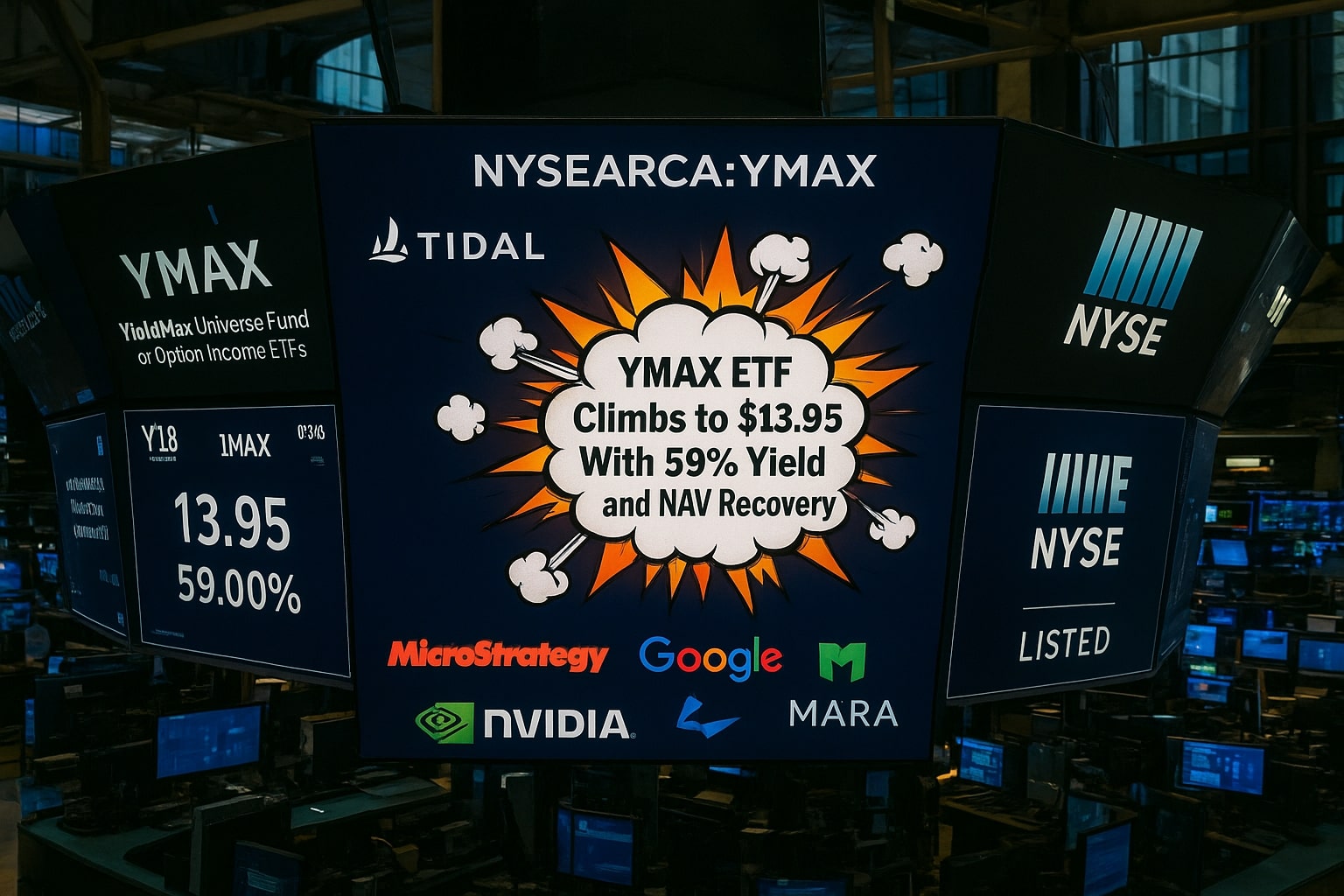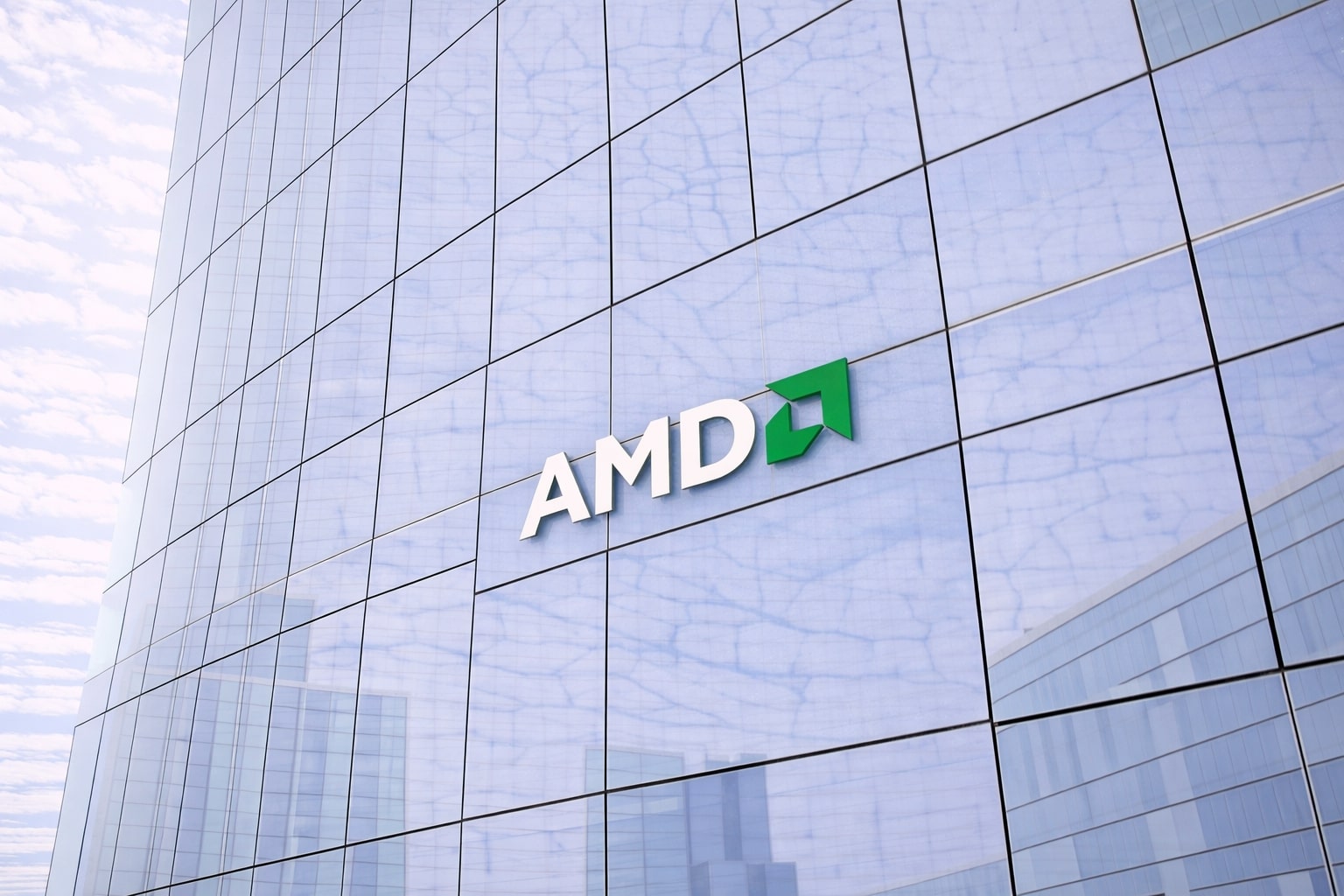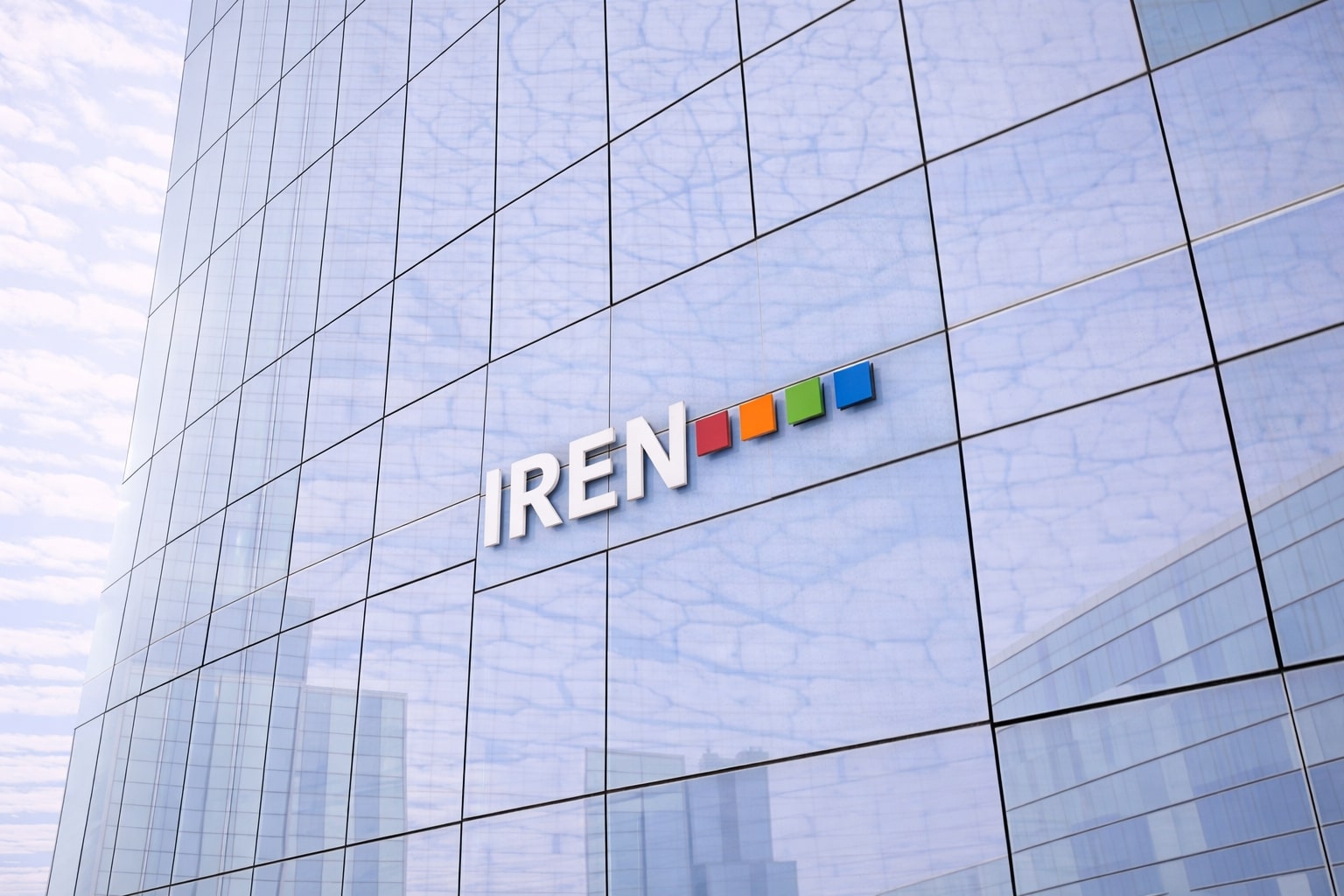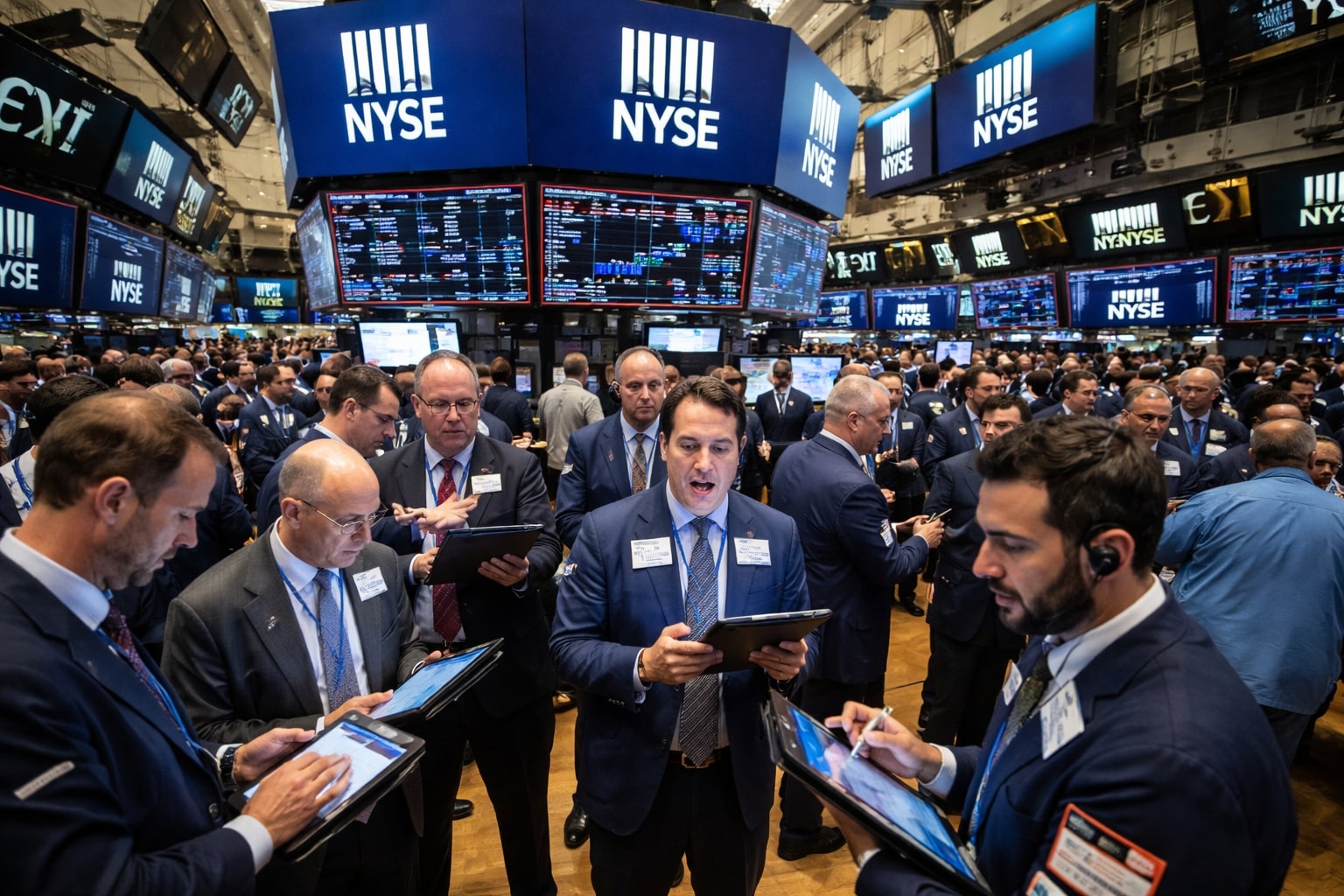YMAX ETF Builds Momentum Amid Strategy Shift, Premium Yield, and Resilient Total Return
Aggressive Yield Meets Technical Recovery as NYSEARCA:YMAX Clears Post-Crash Resistance
The NYSEARCA:YMAX ETF is entering a critical inflection point. After shedding over 40% of its NAV since its January 2024 launch, the fund has shifted from a structurally eroding trajectory to a price recovery cycle that is both technically and fundamentally supported. Now trading near $13.95, YMAX has climbed meaningfully above its 10-day, 50-day, and 100-day moving averages, indicating short- and medium-term upside alignment. That technical posture comes as its covered call machinery—spread across 30+ YieldMax single-stock strategies—continues generating extraordinary income yields, now holding at an annualized 59.15% TTM. With a market regime that still favors volatility and high dispersion, this synthetic-income engine may be entering a more sustainable phase.
Income Engine Redefined: 59% Yield Without Surrendering All the Upside
YMAX’s distinctive design as a fund-of-funds means it does not sell options directly but instead holds a portfolio of ETFs that each run individual covered-call strategies on high-beta stocks like MARA, HOOD, AI, MRNA, GOOGL, and TSLA. These underlying components use synthetic long positions with aggressive call overwriting to collect elevated premiums. Yet unlike typical buy-write products that suffer in trending markets, YMAX has begun behaving less like a fixed-income product and more like a growth-enhanced hybrid. Since inception, its total return sits at +16.43%, despite the price drawdown—a number that begins to look more impressive when placed alongside its ultra-high monthly distributions. For yield-seeking investors who can stomach volatility, this unique structure offers an asymmetric payoff not typically found in traditional income vehicles.
Monthly Rebalancing: The Hidden Drag on Early NAV and the Quiet Catalyst for Change
YMAX’s prior underperformance relative to its component ETFs like HOOY, AIYY, or GOOY stemmed not just from the covered-call drag but also its equal-weight monthly rebalancing strategy. That systematic selling of outperformers and buying of laggards effectively trimmed gains while doubling down on losers like MRNY, which weighed down NAV performance across volatile periods. However, since Q2 2025, fund managers have quietly adjusted their strike selection methodology, introduced credit spreads and put overlays, and shifted to weekly distributions—all while keeping the 1.28% expense ratio stable. This evolution in execution has allowed the ETF to now preserve capital better while still maximizing option yield. The result is a structure that now appears more adaptive to changing volatility regimes and underlying stock rotations.
Growth Portfolio in Disguise: YMAX Outperforms ULTI, QQQ and SPY in Post-Selloff Cycle
Data since the April 2025 tariff crash shows that YMAX has outperformed not just peers like the YieldMax Ultra Income ETF (ULTY) but also broad benchmarks like QQQ and SPY over volatile rebound periods. This outperformance defies traditional expectations of option income strategies, which typically lag during rebounds. The secret lies in YMAX’s equal-weight model, which gives volatile names like MARA or AI an outsized return contribution compared to market-cap-weighted structures. During sharp rallies, the ETF captures some of the upside via retained delta even as calls cap extreme moves. During downturns, the embedded option premium continues providing downside cushion—limiting drawdowns to 2–5% less than naked equity analogs. In effect, the ETF now behaves like a volatility-harvested growth engine with yield kicker.
Volatility as a Feature, Not a Bug: Covered Call Strategy Finds Its Regime
YMAX’s recovery isn’t only about better execution—it’s also about macro alignment. With AI sector momentum stabilizing and crypto markets becoming more institutionalized, upside is now less explosive but more consistent—exactly the condition where call-selling thrives. Volatility remains elevated due to geopolitical and Fed policy noise, but without the type of persistent melt-ups that destroy covered-call alpha. The macro regime has moved from “trend-chasing” to “mean-reversion and rotation,” which supports high-frequency premium harvesting. Meanwhile, regulatory wins like the Genius Act supporting stablecoin infrastructure point to continued volatility in blockchain-linked equities—a tailwind for YMAX holdings like MARO and AIYY.
NAV vs Yield Balance Improves as Distribution Trend Turns Constructive
Distribution charts built from July 2025 weekly payments show a mild fluctuation in raw dollar terms but a clear uptrend on a 4-week moving average basis. This is the best sign yet that yield has not come at the expense of NAV erosion. In fact, YMAX’s ability to stabilize its share price since April while keeping payout yield near 59% demonstrates that dividends and capital gains are now working in sync rather than in conflict. For investors reinvesting yield, this represents a powerful compounding engine that could outperform typical dividend ETFs on a total return basis in a sideways or choppy market.
Fee Headwinds Moderate vs Performance Surprise in 2025
The 1.28% annual expense ratio remains a sticking point compared to lower-cost income ETFs, yet it is increasingly justified by performance. While ULTI charges between 1.22–1.40% depending on volatility, YMAX’s better risk-adjusted return in 2025—with significantly lower maximum drawdown—has made it a compelling alternative. Importantly, fee drag has become less pronounced as the fund grows in AUM and achieves better option execution. Should rates decline in Q4 as expected, and volatility remain range-bound, the fund’s gross income potential could accelerate even further.
Risk Management for Crash Scenarios: Not Immune, But Structurally Cushioned
Despite the compelling case for YMAX’s structure in sideways or mildly bullish regimes, it's important to note that it still carries elevated crash risk due to its exposure to speculative growth. In the event of a 2020-style waterfall selloff, the ETF could see NAV drawdowns amplified by its holdings’ beta. However, because of the layered nature of option income and its increasing use of put spreads and hedging overlays, YMAX would still likely fare better than direct exposure to high-beta equities. Investors may consider pairing YMAX with far OTM protective puts if tail risk coverage is desired, though reinvesting a portion of distributions can also help rebuild capital rapidly post-drawdown.
Positioning Ahead: A Better Fit for Slower AI Gains and Stabilized Crypto Themes
As NVIDIA and other AI giants begin transitioning from hyper-growth to moderate expansion, and stablecoin adoption scales globally, YMAX finds itself aligned with the new normal of growth: not vertical, but durable. In contrast to funds like ULTI which chase volatility for yield maximization, YMAX’s fund-of-funds design allows it to balance participation and protection, delivering a total-return income strategy with lower NAV volatility. Should BTC, AI, and next-gen fintech stocks continue to consolidate gains into 2026, YMAX is structured to monetize this regime, not merely survive it.
Verdict: Buy – YMAX Offers a Rare Income-Growth Hybrid With Tactical Upside
The repositioning of NYSEARCA:YMAX over the past four months, combined with smart adjustments to its underlying option framework, rising AUM, and improving payout consistency, suggests that this ETF has broken out of its early misfires. With share price targeting a return to the $15.00 level, a yield still holding near 59.15%, and a macro backdrop that increasingly favors covered call harvesting across high-beta underlyings, YMAX now deserves a tactical upgrade. For high-yield-seeking investors who can withstand volatility, this is a Buy. But the edge will belong to those who reinvest part of that massive yield and give the compounding engine time to build.



















